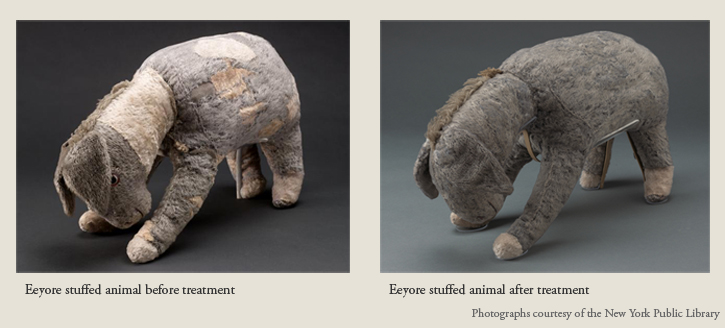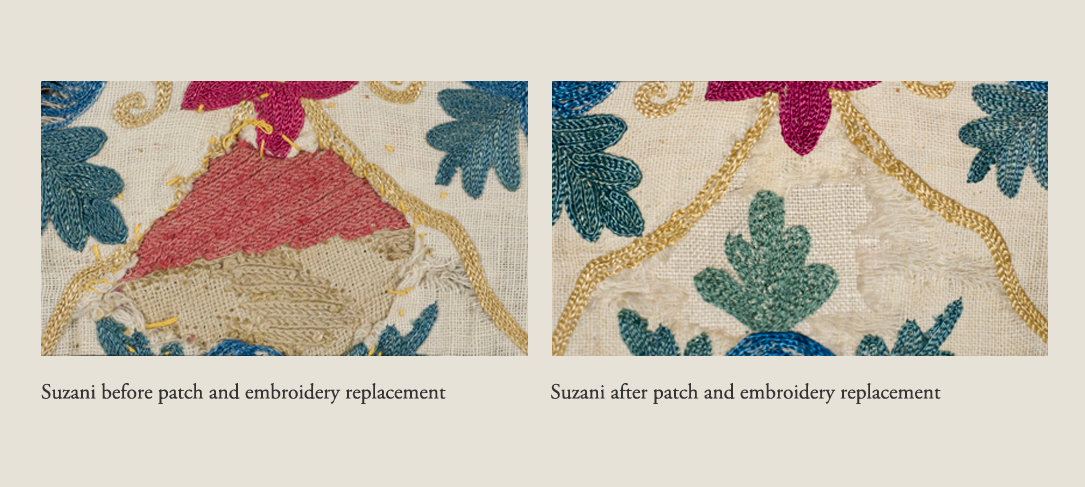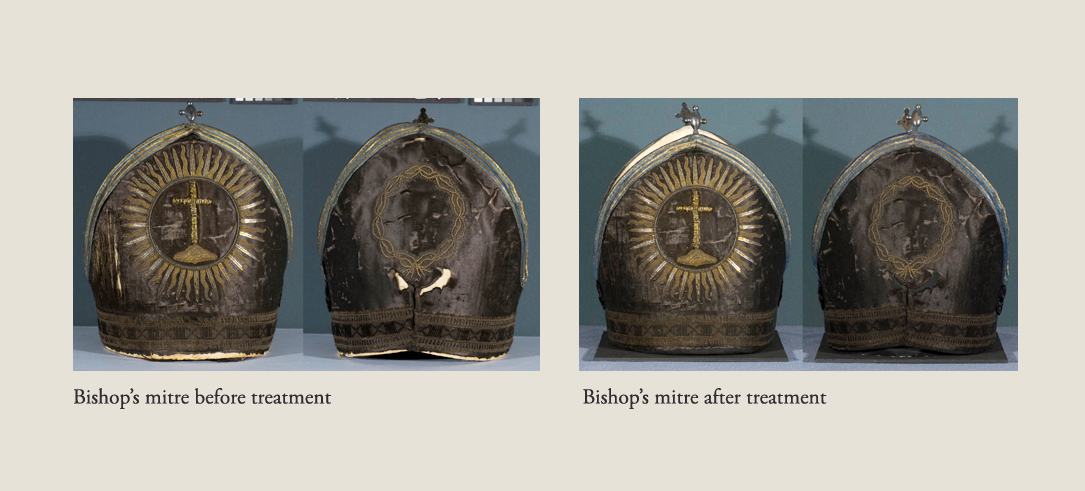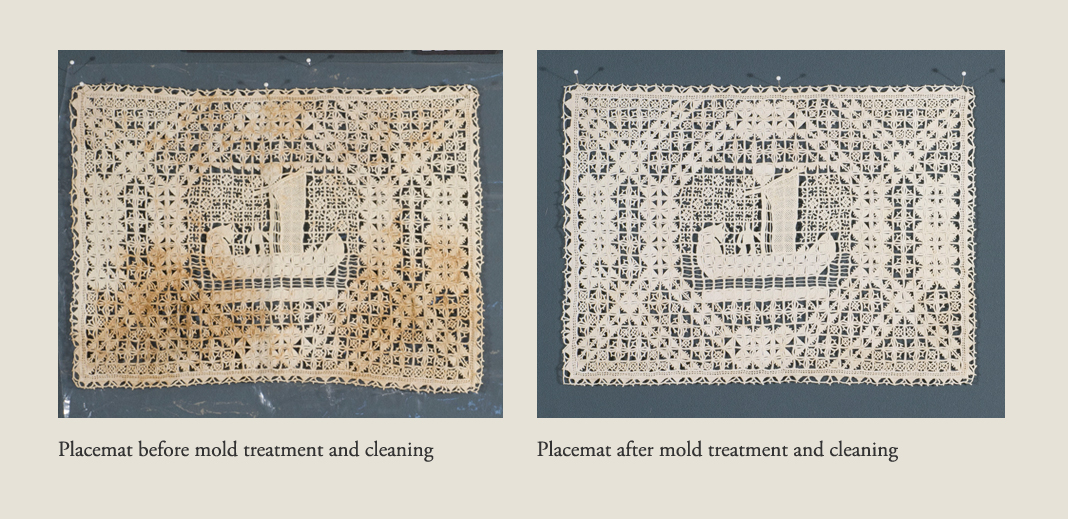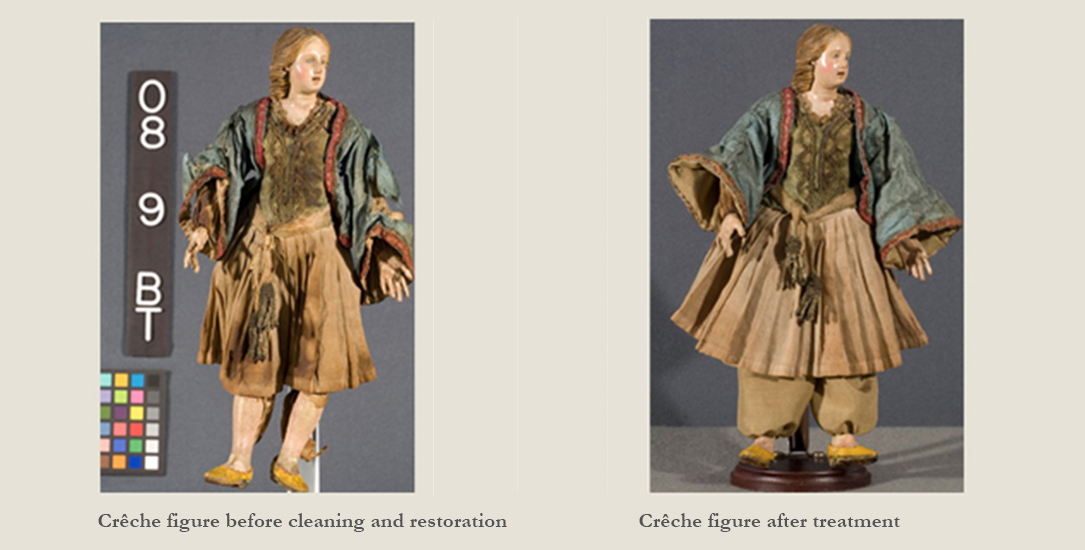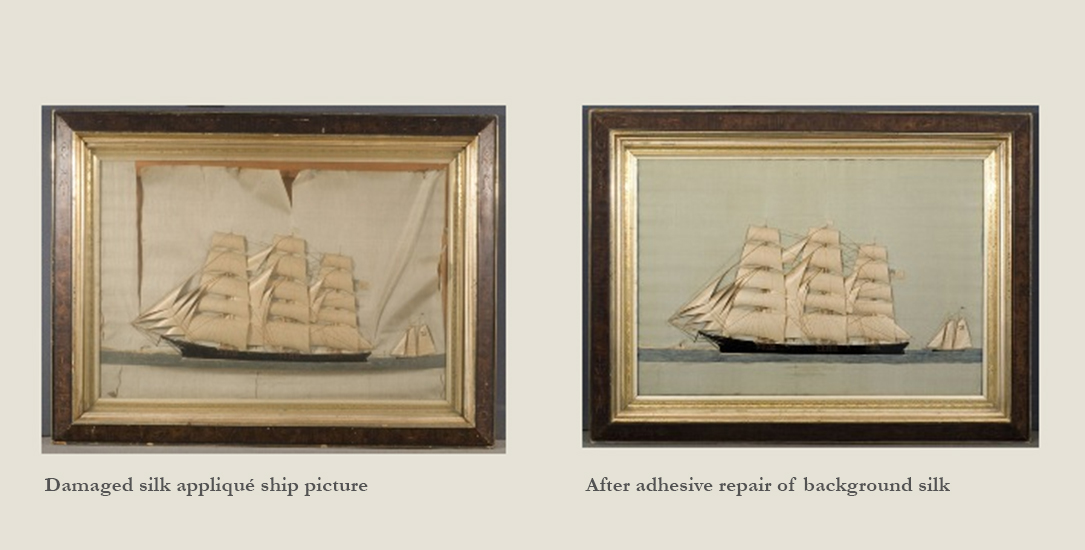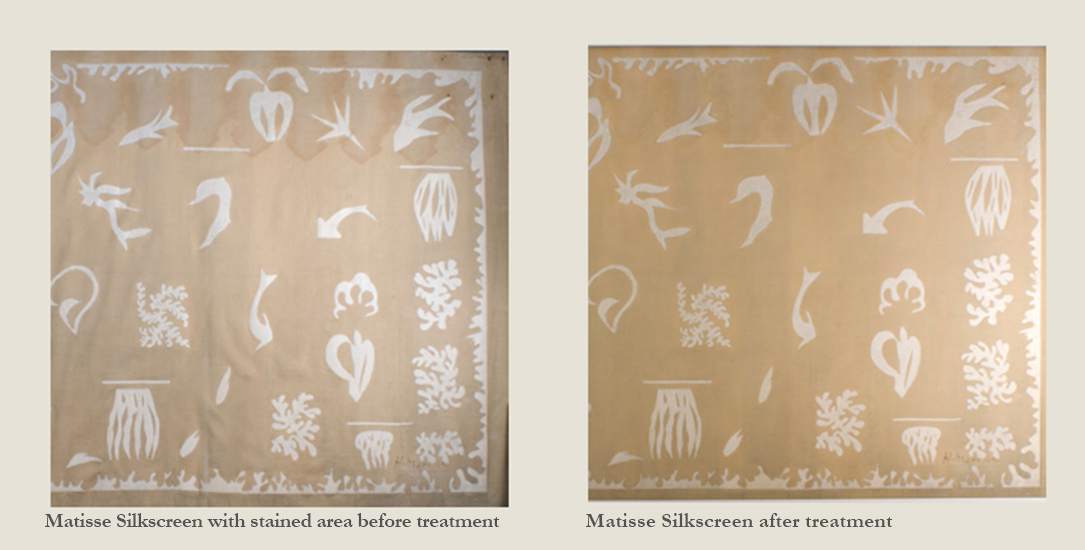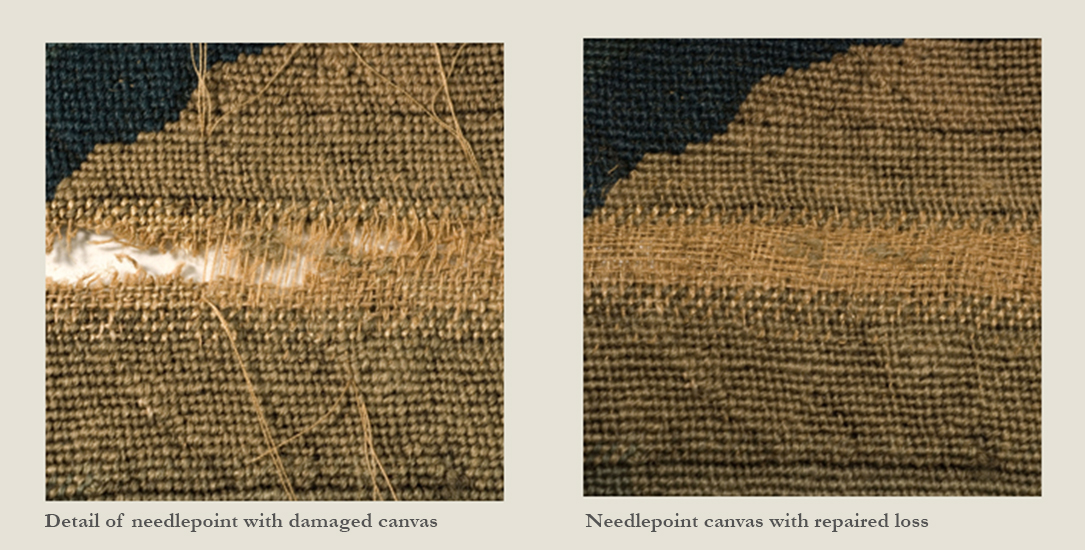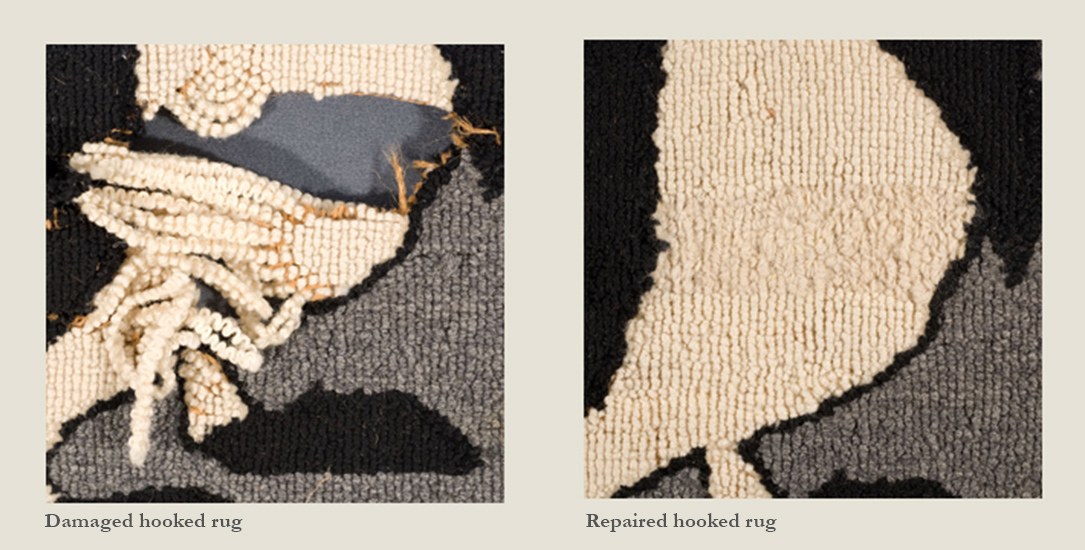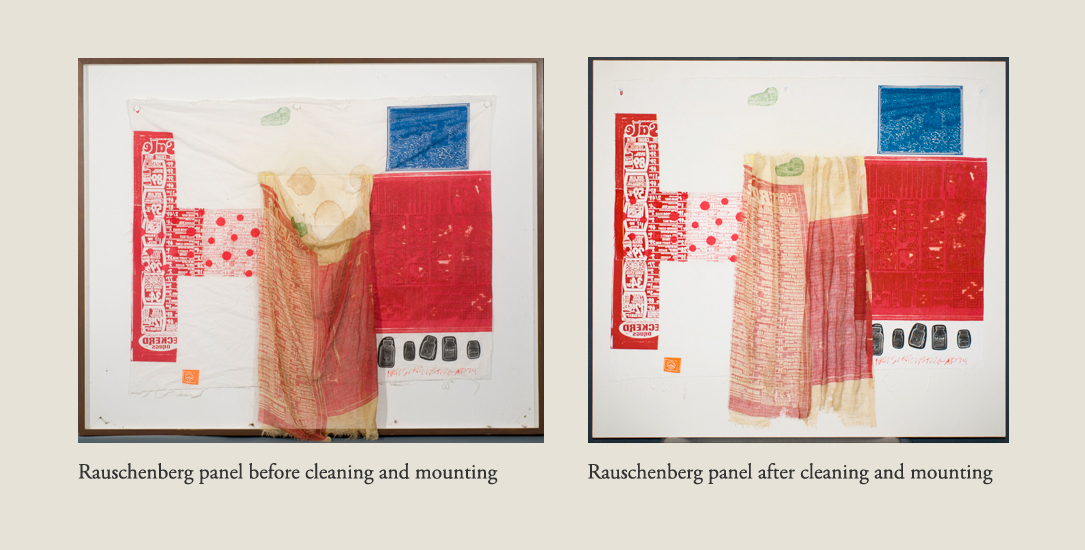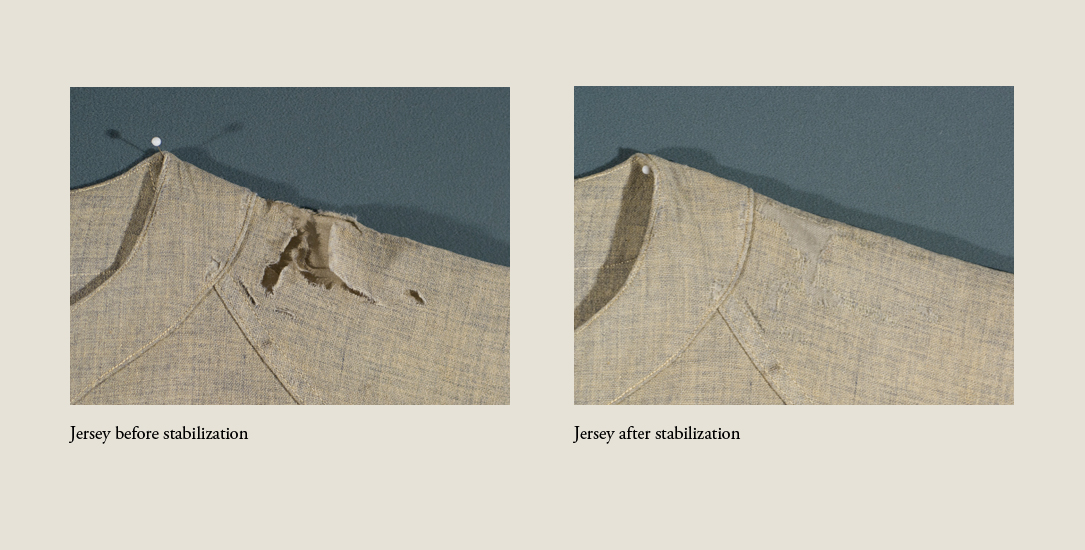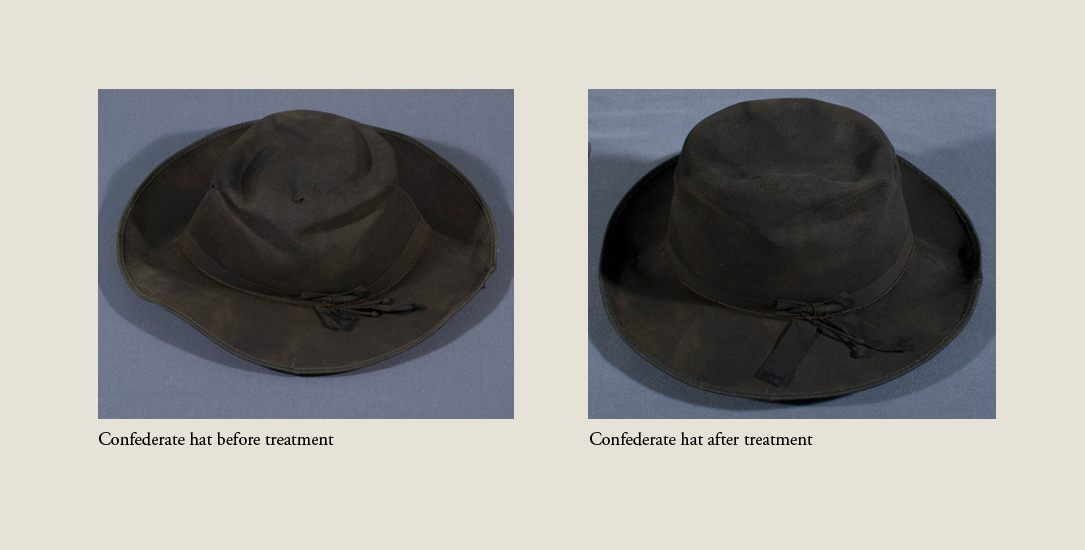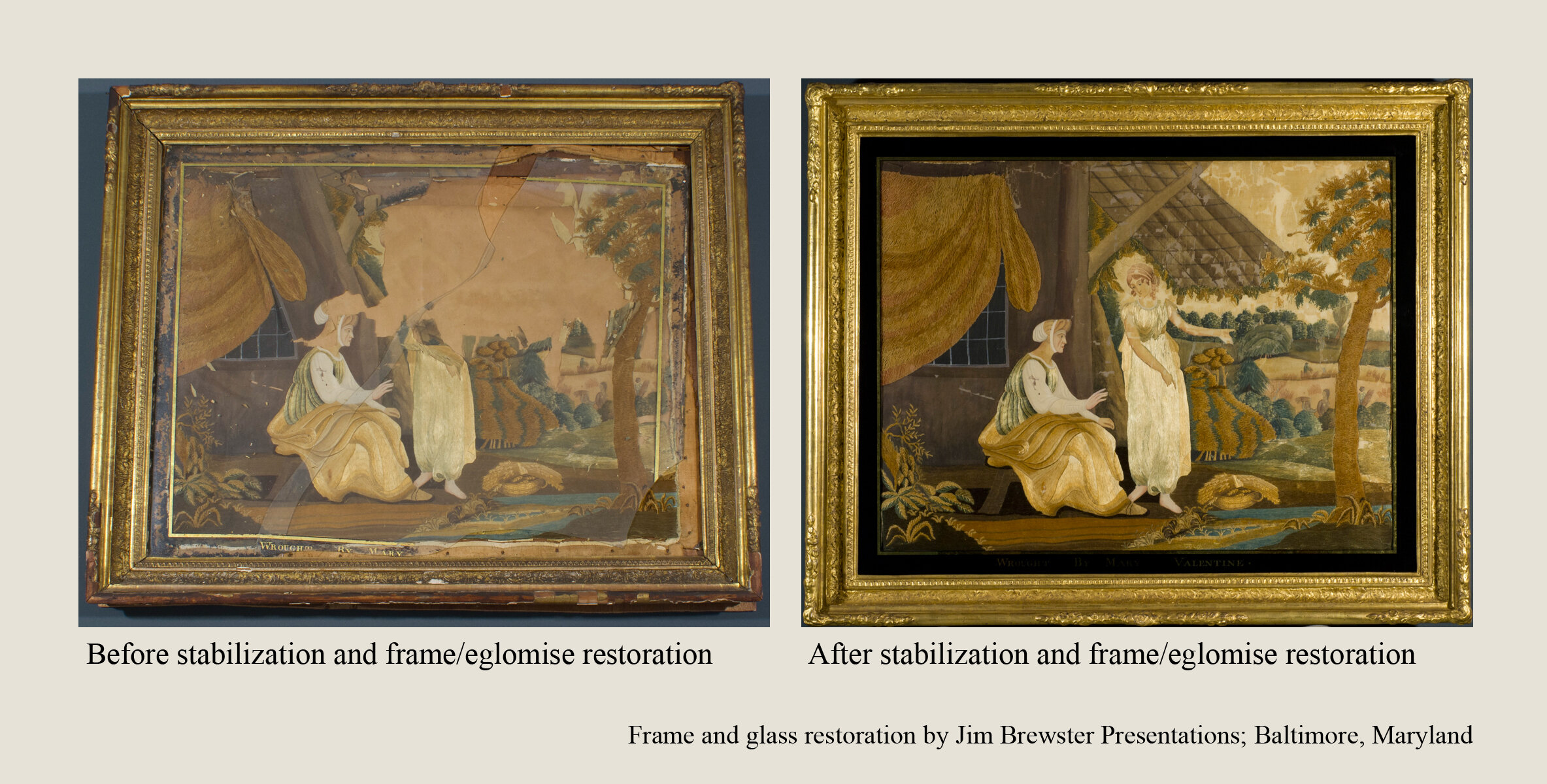WHAT WE TREAT
The Textile Conservation Workshop provides repair, cleaning, display and storage services for textiles such as:
Archaeological and ethnographic textiles, ethnic and ecclesiastical textiles, Native American textiles, European and Asian textiles, Judaica
Needlework, laces, needlepoint, samplers, crocheted and knitted work, silk memorial embroideries, theorems
Antique household and domestic textiles, quilts, coverlets, costumes and accessories, dolls
Tapestries, pile and flat woven rugs, hooked rugs
Flags and banners, political and sports memorabilia, painted textiles













